
This quiz gives a teacher insight on student learning for the standard 3.MD.5 (concept of area).
- Subject:
- Mathematics
- Material Type:
- Formative Assessment
- Date Added:
- 11/16/2019

This quiz gives a teacher insight on student learning for the standard 3.MD.5 (concept of area).

This quiz gives a teacher insight on student learning for the standard 3.MD.5 (concept of area). This quiz includes a short answer question which connects a real-word example problem for using area.
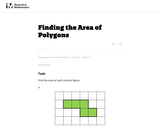
This is a task from the Illustrative Mathematics website that is one part of a complete illustration of the standard to which it is aligned. Each task has at least one solution and some commentary that addresses important asects of the task and its potential use. Here are the first few lines of the commentary for this task: Find the area of each colored figure. Each grid square is 1 inch long....

For this task, students view four letters and imagine that each square in the picture measures one centimeter on each side. Students use this information to find the area of each letter.
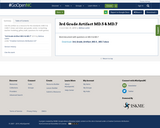
Use this artifact as a resource for the standards 3.MD.5 & 3.MD.7. (Uses: exit ticket, quiz grade, center, re-teaching, teacher modeling, gallery walk, questions for math games)

This parent guide supports parents in helping their child at home with the 3rd grade Math content. Within the folder you will access Parent Guide PDFs in FIVE Languages: Arabic, English, Hindi, Spanish, and Vietnamese to help on-going communication with caregivers.

This resource accompanies our Rethink 3rd Grade Math Course. It includes ideas for use, ways to support exceptional children, ways to extend learning, digital resources and tools, tips for supporting English Language Learners and students with visual and hearing impairments. There are also ideas for offline learning.

Students are introduced to the classification of animals and animal interactions. Students also learn why engineers need to know about animals and how they use that knowledge to design technologies that help other animals and/or humans. This lesson is part of a series of six lessons in which students use their growing understanding of various environments and the engineering design process, to design and create their own model biodome ecosystems.

Learn to identify one square unit that can be used to measure area in this brief interactive tutorial.

In this math game, students will explore the concept of covering a region with unit squares and score points for each correct response. Once they complete the round they can advance to the next level where they will multiply the length measurements to find the area of a rectangular region.
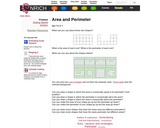
This resource can be used as a center activity to enrich students' understanding of area and perimeter. Links to teacher resources and the solution are located on the left side of the page.
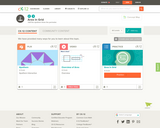
This short video and interactive assessment activity is designed to teach second graders an overview of area.

This short video and interactive assessment activity is designed to teach third graders about area in grid.

This lesson is for Grade 3 on math. At Home Learning Lessons are a partnership between the North Carolina Department of Public Instruction, PBS North Carolina, and the William and Ida Friday Institute for Educational Innovation. Each lesson contains a video instructional lesson, a PDF lesson plan with a transcript, and a PDF file of extension activities.

Day 1:
In this lesson, students will…
Use Bee-bots to trace the perimeter of a rectangle. They will then prove their findings with equations that match the path that they coded.
Day 2:
In this lesson, students will…
Use Bee-bots to “drive” the area of a rectangle. They will then prove their findings with equations that match the path that they coded.
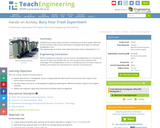
Students bury various pieces of trash in a plotted area of land outside. After two to three months, they uncover the trash to investigate what types of materials biodegrade in soil.

This unit contains a curriculum-embedded Common Core aligned task and instructional supports. The task is embedded in a 3-4 week unit on solving real-world problems to reinforce the strategies of tiling, multiplication, addition and area models to calculate the perimeter and area of polygons. In addition, students will need to demonstrate and explain their reasoning of strategies used to solve the task.
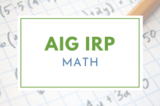
This lesson is designed to challenge students to learn about how geometry and measurement are used in the real world by architects. The students will explore various concepts such as area and perimeter as well as developing benchmarks for measurement. This lesson was developed by NCDPI as part of the Academically and/or Intellectually Gifted Instructional Resources Project. This lesson plan has been vetted at the state level for standards alignment, AIG focus, and content accuracy.
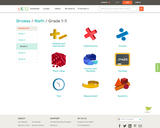
CK-12's Elementary Math Grade 3 is a series of videos and interactive videos designed to teach basic math concepts to 3rd graders. Concepts covered include Addition and Subtraction, Multiplication, Division, Place Value, Decimals, Time, Factors and Multiples, Money, Measurement, and Geometry.

Students select three different rectangles and determine the number of color tiles needed to cover them. Students sketch and label the rectangles in order from least to greatest area and complete sentence stems about the rectangles.